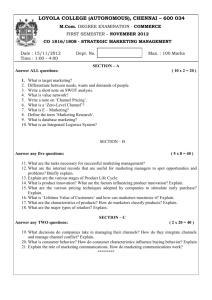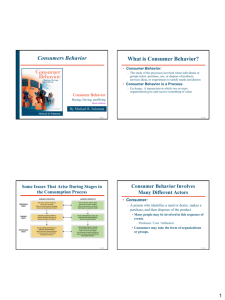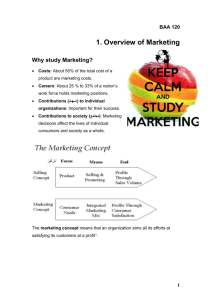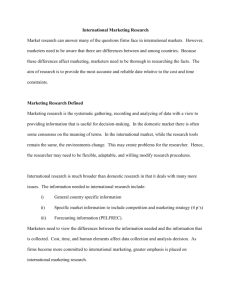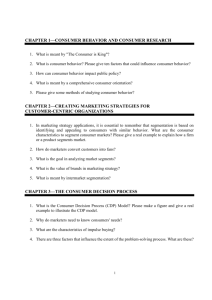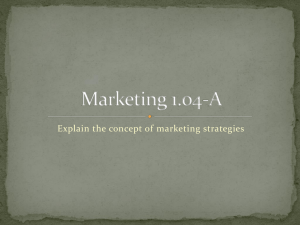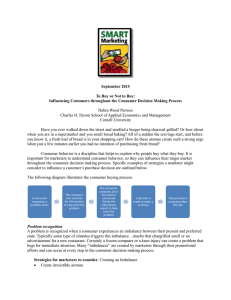Whole Food Market
advertisement
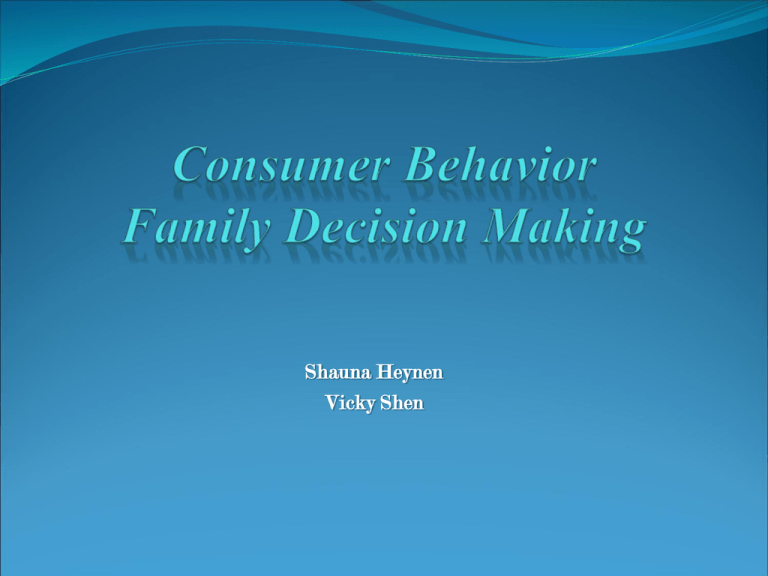
Shauna Heynen Vicky Shen Table of Content Introduction Family Decision Making Individual Decision Making Differences Similarities Marketing to Families Conclusion Every family is unique. There is no decision that can work for all families. It is important for marketers to know how families make consumer decisions. Modern Family The new meaning of household Age of the family Family size Non-traditional family structures The people living at home The Family Life Cycle Model (FLC) Can provide a clear image of what the target market is to the marketers. Examples: on average younger households spend less money on products and services new formed families without children are willing to spend more time and money on entertainment and social life Type of Decisions Consensual purchase decision: Members agree on desired purchase Accommodative purchase decision: Members have different preferences or priorities and cannot agree on a purchase Family Decision Making (cont.) Families Decision Roles: Pre-purchase Stage: Initiator Information gatherer Gatekeeper Influencer Purchase Stage: Decision maker Preparer Buyer User Post-purchase Stage: Maintainer Disposer Family Decision Making (cont.) Decision Makers Autonomic decision When one family member chooses a product Syncratic Decision When the family jointly makes a decision Four Factors Determine the Degree to Which Decisions will be Made Jointly by One or the Other Spouse Sex-role stereotypes Spousal resources Experience Socioeconomic Status Individual Decision Making Decision Making Process: Need Recognition Information Search Evaluate the Alternative Purchase Decision Consumption and Learning Individual Decision Making (cont.) Types of Decisions: Differences Family Decision Making More than one person will be participate in any stage of problem-solving sequence 2 basic types of decisions: Consensual purchase decision Accommodative purchase decision Individual Decision Making Individuals only have to make decisions for themselves A continuum scale is used to evaluate types of consumer decisions: Habitual decision making Limited problem solving Extended problem solving Similarities Family Decision Making Same Decision Making Process: Individual Decision Making Same Decision Making Process: Need Recognition Need Recognition Information Search Information Search Evaluate the Alternative Evaluate the Alternative Purchase Decision Purchase Decision Consumption and Learning Consumption and Learning Marketing to Families Marketers must attempt to create a need for a product for two or more people. Use the Family Life Cycle Discovering who the FFO is Family Financial Officer Children can be very influential on the products being consumed Commercials & Ads Marketed to Families Families are ever evolving unique groups containing two or more people Tradition family to the Modern family Marketers have developed certain criteria and tricks Solomon M. R., Zarichowsky J. L., Polegato R., (2005) Consumer Behavior 3rd Edition You Tube LLC, 2007,. (July 30,2007) http//:youtube.com Questions ?



